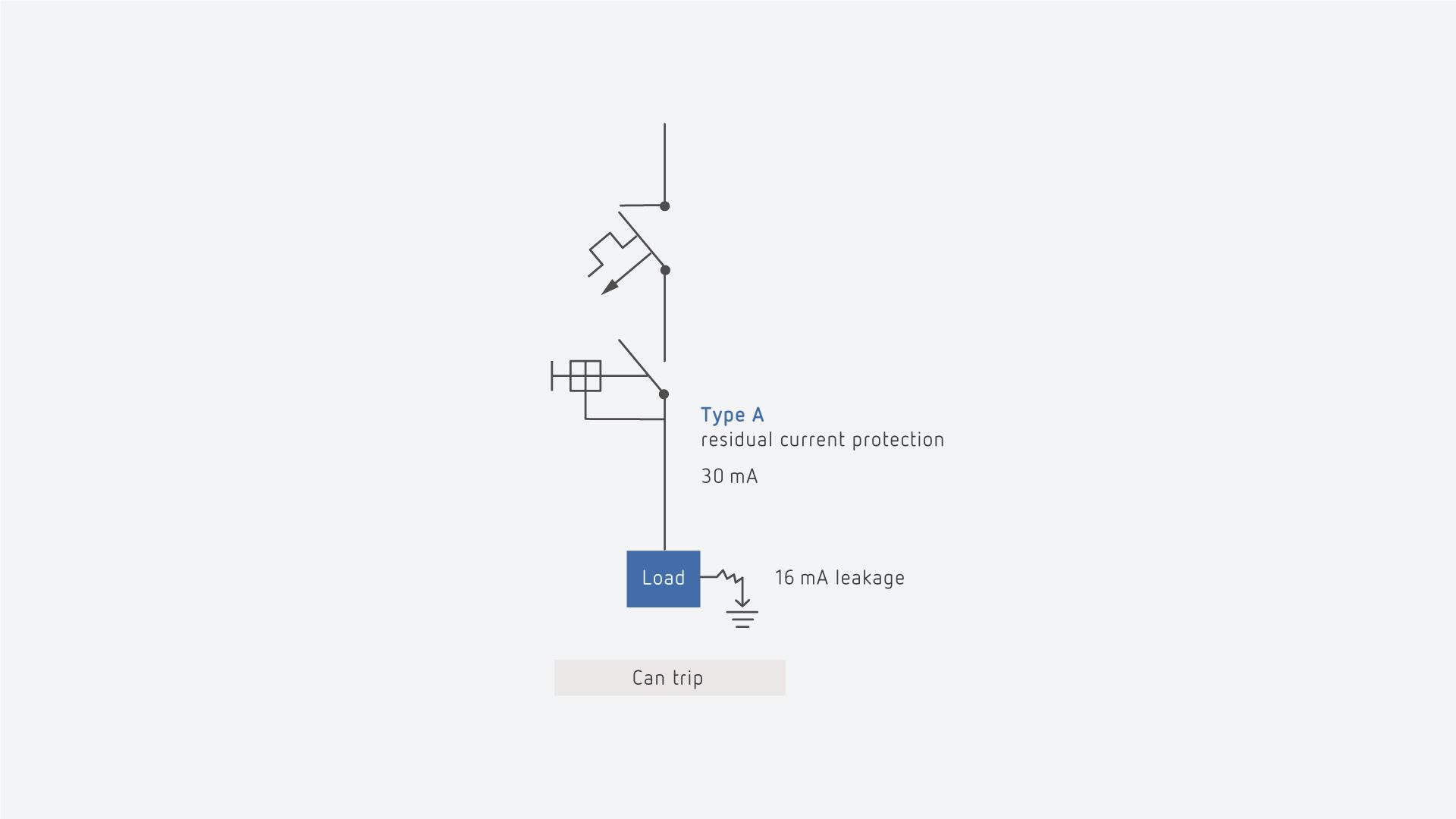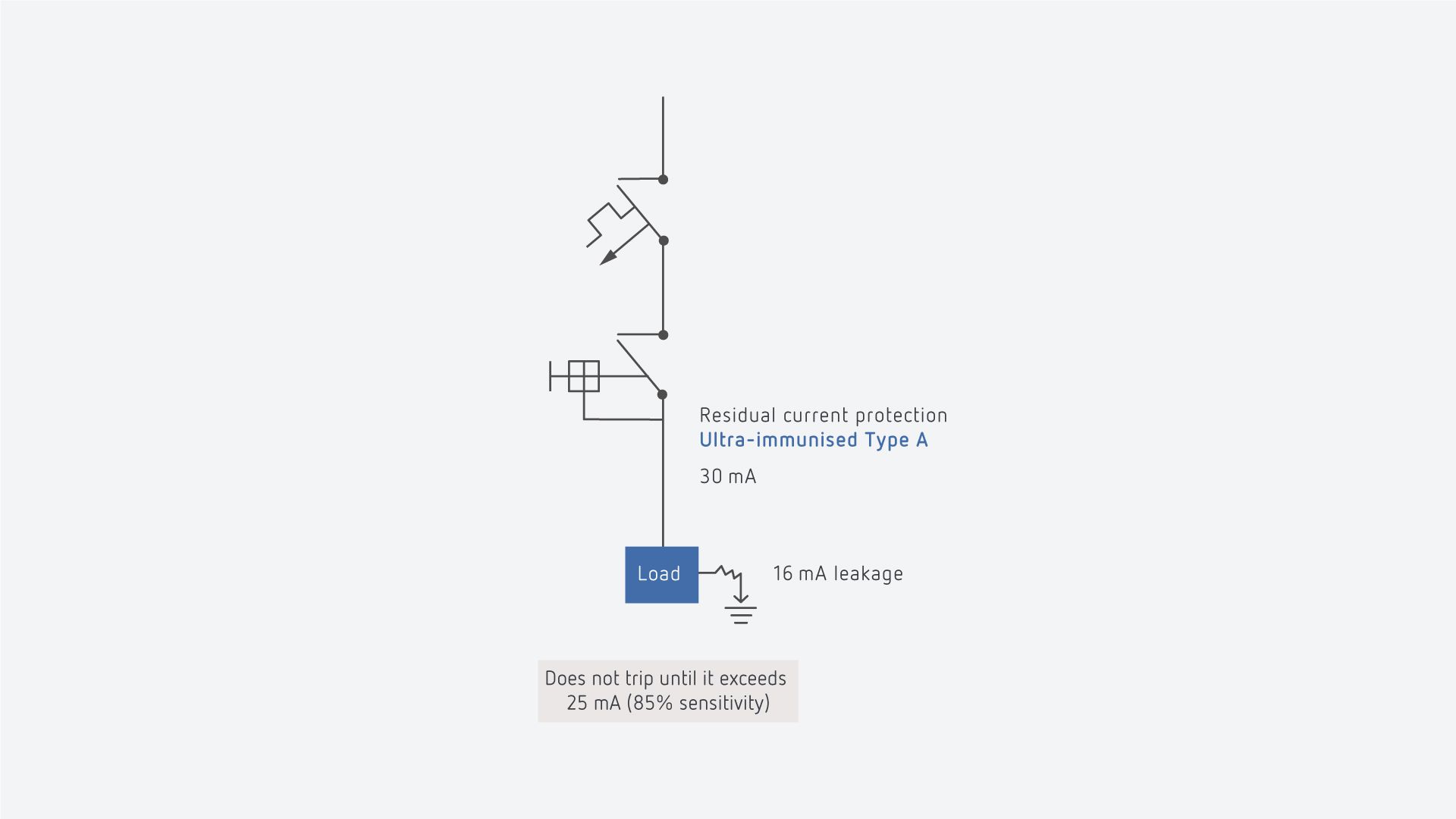Despite being the most common type of protection, to avoid unwanted trips, we have to differentiate between those solutions with ultra-immunised systems and those without, since the choice of ultra-immunised protection device can prevent service outages that should not appear in normal conditions.
Devices without ultra-immunised systems can trip due to a leakage of more than 50% of their rating, and can cause a trip with a leakage current that is much lower than the trip limit. This means that, for example, a device that guarantees protection from 30 mA can trip with a 15 mA leakage current. In distribution panels with several lines, it is possible for the combined earth leakage current to be below 30 mA, and for the device to trip from 15 mA, a threshold well below the 30 mA required.
To prevent this effect, Circutor offers ultra-immunised devices that are guaranteed not to trip below 85% of the circuit breaker's rating. In other words, continuing with the example above, these devices will only trip with currents above 25 mA, without ever exceeding the 30 mA required by the protection system.



